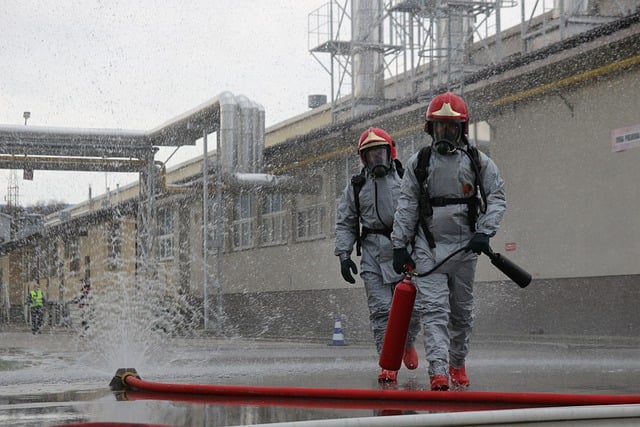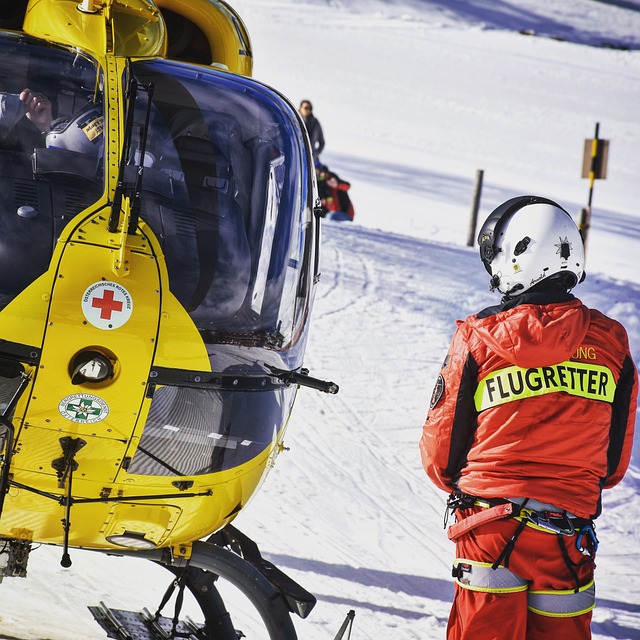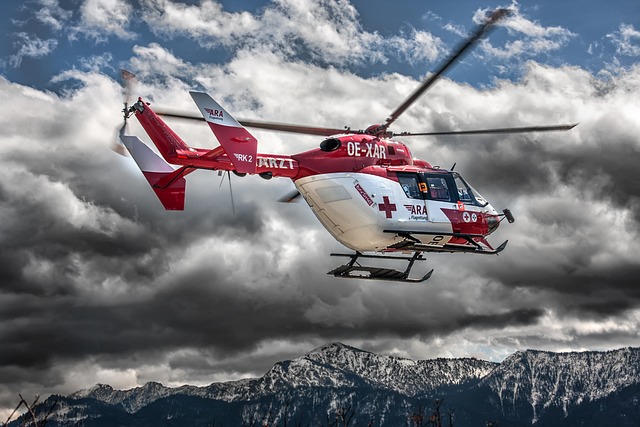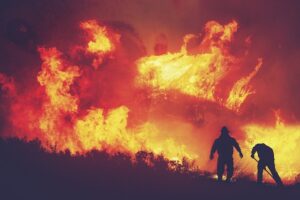
Flashlights For Search And Rescue Operations are essential tools in emergency response scenarios, particularly when searching for victims trapped under debris. These specialized flashlights are designed to be incredibly durable and impact-resistant to function effectively in harsh conditions, with impact-resistant lenses to protect the light source. LED technology ensures a bright and efficient light, which is crucial for both navigation and detecting signs of life. Search and rescue teams rely on these flashlights to illuminate dark or obscured areas, and their compact designs allow for easy carry without adding significant weight. Training programs for SAR personnel are tailored to familiarize rescuers with the use of these flashlights in simulated disaster scenarios, ensuring they can effectively apply their skills when lives depend on it. Regular training with various lighting conditions and debris types is vital for maintaining readiness and enhancing the effectiveness of search and rescue missions.
When disaster strikes, the ability to penetate darkness becomes a matter of life and death. High-quality flashlights play a pivotal role in search and rescue (SAR) missions, particularly in locating victims buried beneath debris. This article delves into the critical features that distinguish flashlights for SAR operations from ordinary lighting tools. We’ll explore the necessity of intense light output and extended battery life, the resilience required to withstand harsh environments, and the transformative effects of LED technology on search visibility. Through real-life SAR operation examples and the importance of training with flashlights in simulated debris scenarios, readers will gain insights into how these tools are indispensable for effective rescue efforts. Flashlights For Search And Rescue Operations are not just a component of the mission; they are a beacon of hope amidst uncertainty.
- Understanding the Role of High-Quality Flashlights in Search and Rescue (SAR) Missions
- Key Features to Look for in a Flashlight for SAR Operations
- The Importance of Light Output and Battery Life in Debris Search Scenarios
- Durability and Impact Resistance: Ensuring Longevity in Harsh Conditions
- The Impact of LED Technology on Search Efficiency and Visibility
- Practical Applications: Real-Life SAR Operations and Flashlight Utilization
- Training and Preparedness: Simulating Debris Search Environments with Flashlights
Understanding the Role of High-Quality Flashlights in Search and Rescue (SAR) Missions

In search and rescue (SAR) operations, the ability to illuminate dark and potentially hazardous environments is crucial for locating and safely recovering victims. High-quality flashlights, specifically designed for SAR missions, play an indispensable role in these scenarios. These specialized flashlights are engineered to withstand harsh conditions, featuring robust construction, impact resistance, and waterproof designs. Their high lumen output allows rescuers to penetrate dense debris or dark spaces, which is vital when searching for individuals who may be trapped or injured. The beam intensity of these flashlights can reveal hidden victims beneath rubble or in narrow crevices that would otherwise remain concealed under normal lighting conditions. Furthermore, the durability and reliability of these flashlights ensure they perform when most needed, providing a steady source of light for extended periods during prolonged SAR efforts. The inclusion of features such as multiple light modes—including strobe or SOS signals—expands their utility, making them versatile tools that can aid in both the search and the subsequent rescue operations. Flashlights for SAR operations are not just equipment; they are lifelines that enhance the effectiveness and success rate of these critical missions. The selection of a high-quality flashlight specifically tailored for SAR work is an investment in the safety and efficiency of emergency response teams, ultimately contributing to the timely and successful recovery of victims.
Key Features to Look for in a Flashlight for SAR Operations

When selecting a flashlight for search and rescue (SAR) operations, the key features that distinguish a reliable model from others are critical for effectiveness in locating victims buried under debris. A durable construction is paramount; the flashlight must withstand harsh environments and rough handling without failure. It should be made of high-quality materials like aircraft-grade aluminum or toughened polymer, providing both strength and lightweight operation. Additionally, impact and water resistance are non-negotiable, as SAR operations often take place in unpredictable conditions.
For illumination, a flashlight for SAR should possess a high-intensity beam capable of cutting through dark and confined spaces. LED technology is preferred due to its longevity, efficiency, and ability to produce a focused light that can stretch far into crevices where victims may be trapped. A dynamic zoom feature allows rescuers to adjust the beam spread, from a tight spotlight to a wider floodlight, enabling them to search both distant areas and close-up spaces effectively. Furthermore, a flashlight designed for SAR should offer multiple lighting modes, including high, medium, and low settings, as well as a strobe function for signaling purposes. A long battery life, with both rechargeable and replaceable options, ensures that the light remains operational during extended missions. Lastly, ergonomic design features, such as a comfortable grip and a securely fastened headlamp or holster attachment, are essential to keep both hands free for the rescue task at hand while ensuring the flashlight is always accessible.
The Importance of Light Output and Battery Life in Debris Search Scenarios

Flashlights designed for search and rescue operations are critical tools in locating victims trapped beneath debris. The light output of these flashlights plays a pivotal role in their effectiveness. A high-intensity beam is necessary to illuminate dark, confined spaces where survivors may be located. The intensity of the light not only helps rescuers to see in low-light or zero-visibility conditions but also enables them to distinguish critical details such as human silhouettes against debris or cracks in materials that might indicate a victim’s position. Moreover, the beam should be focused and penetrating to cut through the clutter, allowing for precise targeting of search areas.
Battery life is equally important in flashlights used for search and rescue operations. In situations where every second counts, the reliability of the light source can mean the difference between a successful rescue and an unsuccessful one. A long-lasting battery ensures that rescuers have a consistent and dependable light source over extended periods, which is crucial when searching through large debris fields or in remote locations where replacement batteries or charging stations are not readily available. Additionally, flashlights equipped with energy-efficient LEDs and capable of multiple brightness settings can extend their operational duration, providing rescuers with both a powerful searchlight and a lower-intensity light for conservation of power when necessary. These features make flashlights for search and rescue operations indispensable tools for first responders in debris search scenarios.
Durability and Impact Resistance: Ensuring Longevity in Harsh Conditions

In search and rescue operations, the durability and impact resistance of flashlights are paramount, as they often operate in the most unforgiving environments. High-quality flashlights for search and rescue operations are engineered to withstand the rigors of such conditions, ensuring that they remain operational when most needed. These devices are typically constructed using robust materials like aircraft-grade aluminum or high-impact polymer, which can endure repeated drops, harsh weather, and the abrasive nature of debris fields. Additionally, their design often incorporates impact-resistant lenses to protect the light source from shattering under stress, preserving visibility for rescuers as they sift through unstable environments. The longevity of these flashlights is not solely dependent on their physical robustness but also on their electrical components’ reliability. Flashlights designed for search and rescue operations are equipped with impact-resistant circuitry to prevent failure from external shocks, ensuring a consistent light output that can last for hours, if not days, depending on the model and battery type. This reliability is crucial when every second counts in locating victims trapped under debris. The combination of rugged construction, advanced materials, and meticulous engineering in flashlights for search and rescue operations means that they are not only tools but also partners in the critical mission to save lives.
The Impact of LED Technology on Search Efficiency and Visibility

LED technology has revolutionized flashlights for search and rescue operations, significantly enhancing search efficiency and visibility in debris-laden environments. Traditional incandescent bulbs have been largely supplanted by LEDs due to their superior longevity, durability, and energy efficiency. These advancements allow rescuers to operate their flashlights for extended periods without the fear of battery depletion, which is critical when searching through large volumes of debris where victims may be trapped. The focused beams produced by high-intensity LEDs can illuminate dark spaces effectively, reducing search times and increasing the likelihood of victim detection. Moreover, the compact nature of modern LED flashlights means rescuers can carry more units or other essential gear without an appreciable increase in weight, facilitating a more comprehensive search pattern. The bright, penetrating light from these flashlights can reveal signs of life, such as movement or faint sounds, that would otherwise remain hidden, thus saving precious time in critical situations.
Practical Applications: Real-Life SAR Operations and Flashlight Utilization

In search and rescue (SAR) operations, flashlights for search and rescue operations play a pivotal role in locating victims buried under debris. These specialized flashlights are designed to withstand harsh environments and provide consistent illumination, which is critical when every second counts and visibility is limited. During real-life SAR events, such as natural disasters like earthquakes or building collapses, the immediate aftermath often involves navigating through unstable structures and dense rubble where victims might be trapped. Flashlights for search and rescue operations are engineered to penetrate dark spaces, offering rescuers a beam that can highlight human silhouettes against debris or reveal vital signs from a distance. Their durability is matched only by their lumen output, ensuring that the light source remains reliable even as conditions deteriorate. Teams deploying these flashlights are trained to use them not just for visibility but also to detect any signs of life through indirect lighting techniques, which can reflect off surfaces and illuminate hidden areas effectively.
The practical applications of search and rescue flashlights are vast and varied, from urban search and rescue (USAR) teams working in collapsed buildings to wilderness SAR units operating in remote or forested areas. The versatility of these tools means they can be used with both hands if needed, allowing rescuers to carry a victim while still maintaining a light source. Additionally, the advanced models often include features such as floodlights for broader coverage or focused spotlights for pinpointing specific areas. These adaptable flashlights are also equipped with high-quality optics and long-lasting batteries, ensuring that they can operate for extended periods under the most challenging conditions. The integration of these tools into SAR operations has proven to be invaluable, significantly increasing the chances of a successful rescue by enhancing the effectiveness and efficiency of on-site search efforts.
Training and Preparedness: Simulating Debris Search Environments with Flashlights

During search and rescue operations, the efficacy of a flashlight is paramount when locating victims buried under debris. Training personnel in the use of flashlights for search and rescue operations is not just about handling the equipment; it’s about simulating real-world conditions to prepare responders for the challenges they will face. Specialized training programs are designed to mimic the disarray of actual disaster sites, where visibility is often minimal. In these controlled environments, rescuers practice with flashlights that meet the standards for search and rescue operations, ensuring they can navigate through narrow spaces, tight crevices, and unstable areas while maintaining communication with their team. This hands-on experience is crucial for developing the skills needed to effectively use flashlights as a tool for locating survivors in environments obscured by rubble. It also helps rescuers to recognize the limitations of light sources under such conditions and to adapt their techniques accordingly, thereby enhancing their ability to perform efficient and safe searches. Regularly updating these training scenarios with varied debris configurations and lighting conditions is essential to ensure that responders are prepared for a range of real-life emergency situations.
In conclusion, high-quality flashlights play a pivotal role in search and rescue operations, particularly when locating victims trapped beneath debris. The right flashlight, characterized by its robust construction, superior light output, and extended battery life, is indispensable for SAR teams navigating the unpredictable and often treacherous environments where every lumen can illuminate a path to safety or reveal a life beneath the rubble. LED technology has significantly enhanced search efficiency and visibility, allowing rescuers to operate with greater precision and effectiveness. Training with these flashlights in simulated debris search scenarios ensures that SAR teams are prepared for real-life emergencies, underscoring the importance of investing in flashlights specifically designed for such critical tasks. Flashlights for search and rescue operations, therefore, are not just tools but vital instruments for saving lives, meriting careful selection to guarantee their performance when it truly matters.







